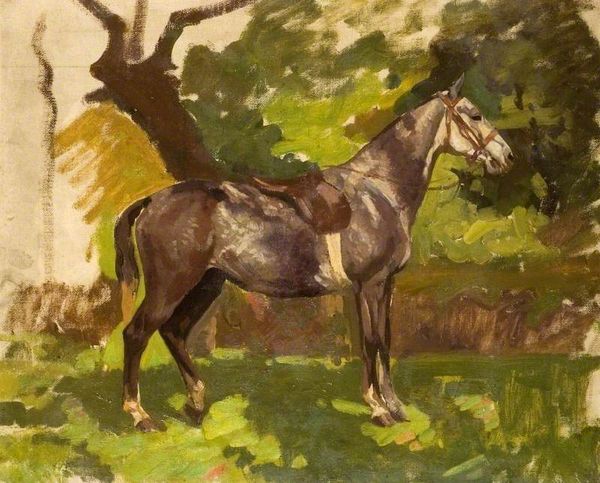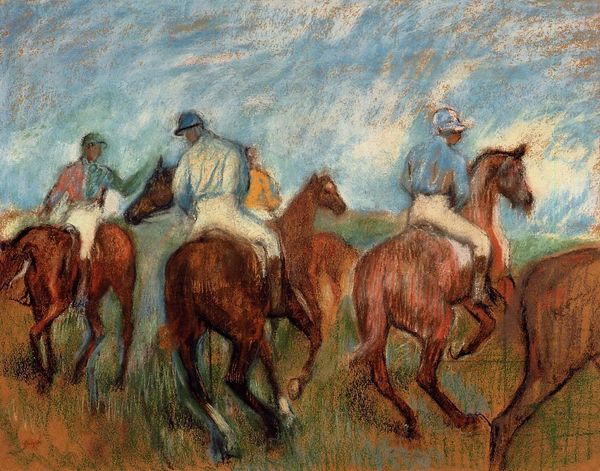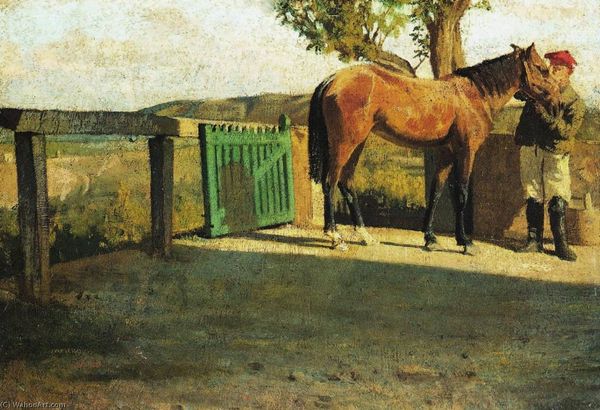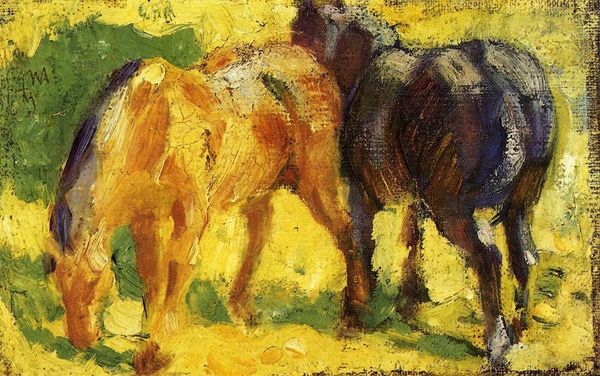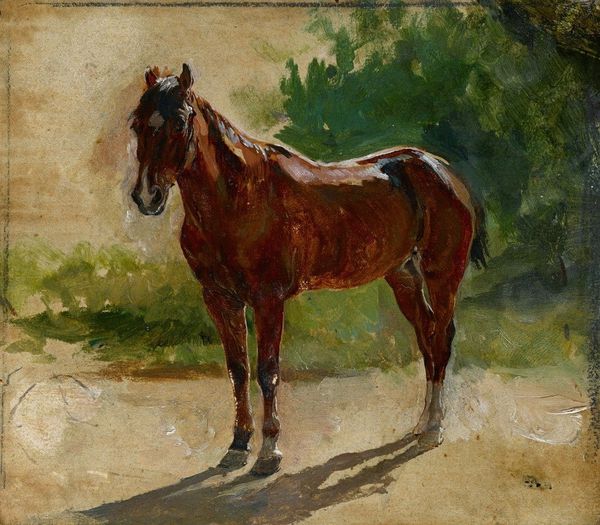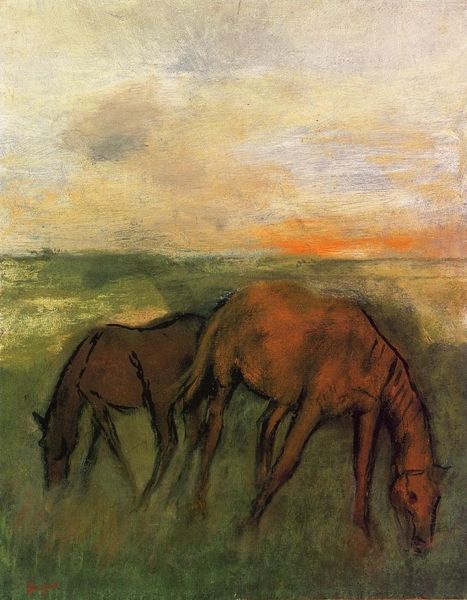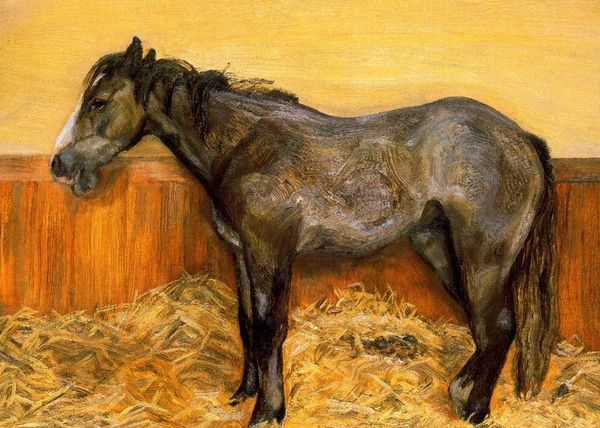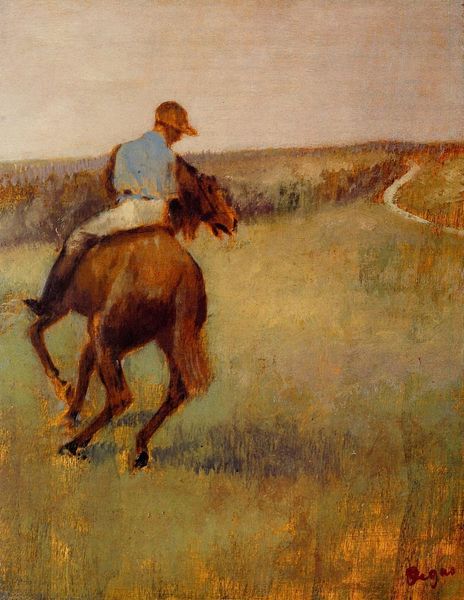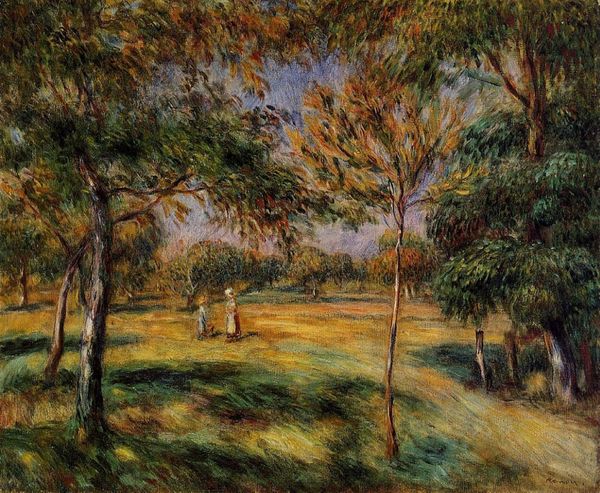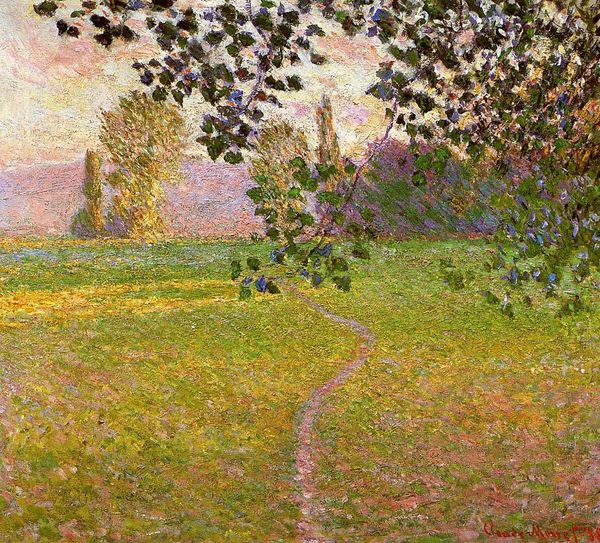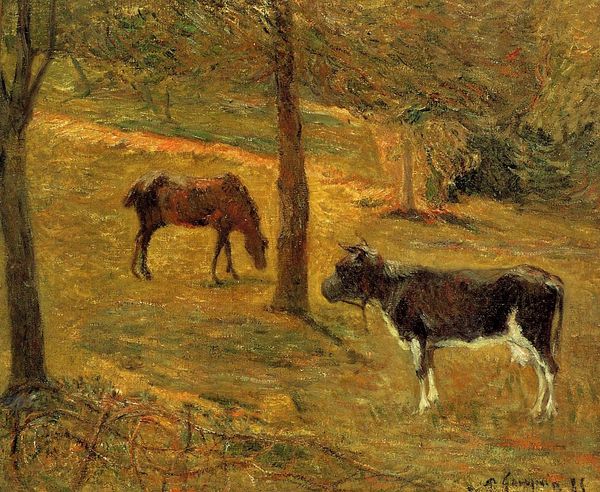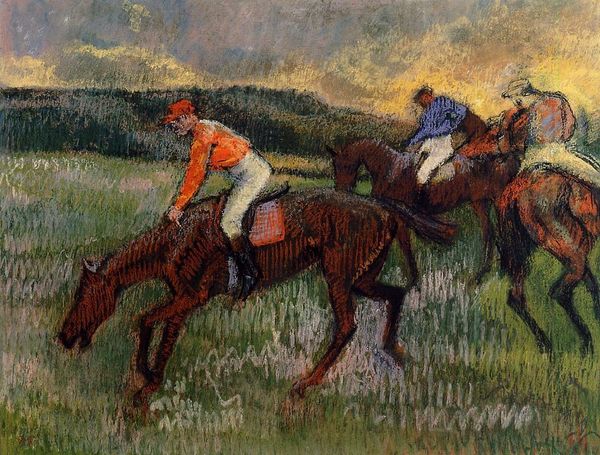
painting, oil-paint
#
portrait
#
painting
#
impressionism
#
oil-paint
#
landscape
#
figuration
#
oil painting
#
horse
Copyright: Public domain
Curator: Georges Seurat’s oil painting, "Horse and Cart," painted around 1884, is quite a subdued work in comparison to his pointillist scenes of leisure. Editor: Yes, initially, I’m struck by the quiet stillness—a stark contrast to the bustle one associates with impressionism. The composition is almost...monochromatic, earthy. Curator: Indeed. Notice how Seurat structures the landscape. The verticality of the trees flanking the centered horse creates a balanced, almost classical, framework. Editor: That horse becomes an emblem then. The horse in art so often stands for strength, vitality, movement. But here, it’s placid, almost melancholic under that harness. A symbol of subdued power. Curator: The materiality further informs our interpretation. Consider the loose brushwork, the visible strokes. It avoids sharp lines. Editor: Precisely! Instead, we find hazy forms, blending the figure into the environment, hinting at transience and the inevitable encroachment of nature onto the tamed animal. One might say, Seurat, known for structure, paints a study of entropy here. Curator: The hazy application you mention perhaps communicates an uncertainty in modernity and the traditional world of agriculture depicted in his subject matter. Editor: The almost dreamlike quality of the imagery lends it a weightiness too. In earlier times, a horse such as this might have been associated with wealth and privilege, but this is not the same symbolism. We now remember the crucial role animals have played in shaping human society and their labor, a symbol worth cherishing. Curator: It’s certainly more contemplative than his later explorations with pointillism. One can feel that Seurat, like so many others, stands at a turning point when reflecting on the past and turning to modern advances. Editor: So we conclude on this muted note; an unusual vision of a pivotal moment in time viewed by Seurat. A quiet but enduring representation that gives voice to the shifting dynamics between the old world and the new.
Comments
No comments
Be the first to comment and join the conversation on the ultimate creative platform.
